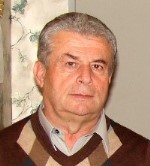Quantitative analysis of the efficiency and productivity of the activity of human systems
Part 1: Graphical analysis of the nonlinear functional relationship between team productivity and team size
FEATURED PAPER
By Pavel Barseghyan
Texas and Armenia
Abstract
The functional relationship between the number of people who implement a project of an arbitrary nature and the effectiveness or productivity of their activities remains one of the topics of important and ongoing discussions in the field of project management.
The study of this functional relationship by statistical methods faces great difficulties because of its extreme complexity and because of the unreliability of the statistical methods themselves.
Therefore, a more promising approach to investigating this problem is the principle-based top-down analytical approach to which this article is devoted.
The analytical approach to the problem is based on the method of equations of state for project work, but before the quantitative presentation of the results of research, it is important to have a qualitative graphical interpretation of the problem, which is what the first part of the article is devoted to.
Key words: State equations of projects, system level project parameters, productivity, team size, non-linear relationships, project failure
Introduction
One of the main criteria for the progress of human life and, in general, at the level of civilization are the productivity and efficiency of human systems of various scales, and productivity characterizes relatively simple human activities, while efficiency characterizes their more complex and large-scale activities.
For example, if the productivity of a simple and homogeneous production process can be adequately measured by the amount of output per unit of time, then the same measure cannot be used to measure the rationality and purposefulness of activities at the state level, since it does not objectively reflect the essence of such a complex system.
To do this, it is more expedient to use similar in meaning, but in essence a more complex and comprehensive characteristic, that is, efficiency, which in simple cases can be equated with productivity.
If we approach this problem from the point of view of the completeness of the quantitative description of systems, then in cases where one criterion is practically enough to describe the activities of people, it is convenient to use the criterion of productivity.
And in cases where the activities of people can be objectively and adequately described by more than one criterion, which differ from each other in the degree of their importance and, in addition, they have functional relationships with each other, then it becomes necessary to use characteristics such as efficiency.
Thus, if we consider the activities of a project team as an example of a relatively simple human system, then it can be characterized by its productivity with sufficient adequacy for practice, of course, taking into account the problems and difficulties in this area.
If the activities of the same development team are viewed as part of a larger system, that is, in the customer – vendor – market chain, then naturally, evaluating the results of such activities will need to deal with more general characteristics such as efficiency.
When evaluating the productivity of project teams, it is usually assumed that they have the necessary information, financial and organizational support and the problem of evaluations is associated with the complexity of the project and the risks of its failure, the size of the team, the duration of work and the productivity of people.
More…
To read entire paper, click here
How to cite this paper: Barseghyan, P. (2021). Quantitative analysis of the efficiency and productivity of the activity of human systems (Part 1: Graphical analysis of the nonlinear functional relationship between team productivity and team size); PM World Journal, Vol. X, Issue III, March. Available online at https://pmworldlibrary.net/wp-content/uploads/2021/03/pmwj103-Mar2021-Barseghyan-quantitative-analysis-of-efficiency-and-productivity-of-human-systems-part-1.pdf
About the Author

Pavel Barseghyan, PhD
Yerevan, Armenia
Plano, Texas, USA
![]()
![]()
Dr. Pavel Barseghyan is a consultant in the field of quantitative project management, project data mining and organizational science. Has over 45 years’ experience in academia, the electronics industry, the EDA industry and Project Management Research and tools development. During the period of 1999-2010 he was the Vice President of Research for Numetrics Management Systems. Prior to joining Numetrics, Dr. Barseghyan worked as an R&D manager at Infinite Technology Corp. in Texas. He was also a founder and the president of an EDA start-up company, DAN Technologies, Ltd. that focused on high-level chip design planning and RTL structural floor planning technologies. Before joining ITC, Dr. Barseghyan was head of the Electronic Design and CAD department at the State Engineering University of Armenia, focusing on development of the Theory of Massively Interconnected Systems and its applications to electronic design. During the period of 1975-1990, he was also a member of the University Educational Policy Commission for Electronic Design and CAD Direction in the Higher Education Ministry of the former USSR. Earlier in his career he was a senior researcher in Yerevan Research and Development Institute of Mathematical Machines (Armenia). He is an author of nine monographs and textbooks and more than 100 scientific articles in the area of quantitative project management, mathematical theory of human work, electronic design and EDA methodologies, and tools development. More than 10 Ph.D. degrees have been awarded under his supervision. Dr. Barseghyan holds an MS in Electrical Engineering (1967) and Ph.D. (1972) and Doctor of Technical Sciences (1990) in Computer Engineering from Yerevan Polytechnic Institute (Armenia).
Pavel’s publications can be found here: http://www.scribd.com/pbarseghyan and here: http://pavelbarseghyan.wordpress.com/. Pavel can be contacted at terbpl@gmail.com
To view other works by Dr. Barseghyan that have been published in the PM World Journal, visit his author showcase in the PM World Library at https://pmworldlibrary.net/authors/dr-pavel-barseghyan/









